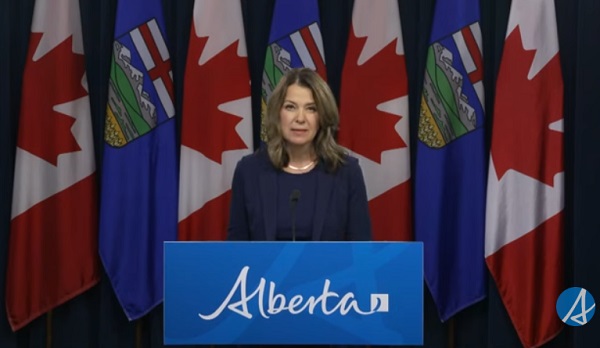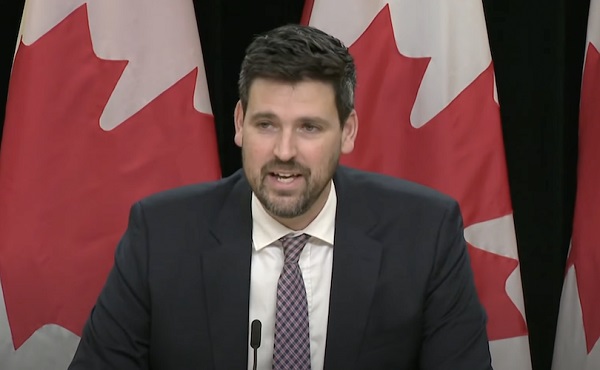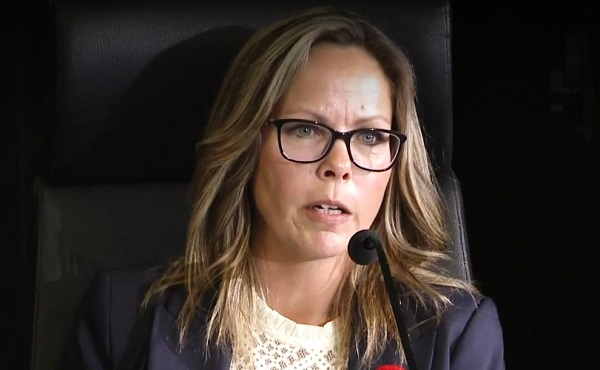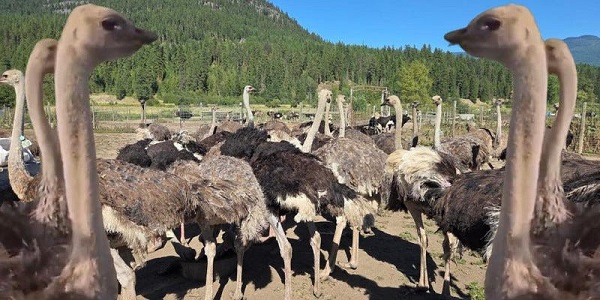Alberta
Alberta “Open for Summer” plan to begin Friday
Alberta’s Open For Summer Plan
Alberta’s government will remove provincewide health measures in three stages as vaccine targets are reached and hospitalizations decline.
Alberta’s Open for Summer Plan provides a three-stage road map to lifting health restrictions and safely getting back to normal.
The plan provides Albertans with a clear picture of a summer without restrictions as long as Albertans continue to follow public health measures in the short term and vaccination numbers continue to rise quickly.
Alberta’s Open for Summer Plan includes three stages based on vaccination thresholds and hospitalizations:
- Stage 1: Two weeks after 50 per cent of Albertans age 12-plus have received at least one dose of vaccine and COVID-19 hospitalizations are below 800 and declining.
- Stage 2: Two weeks after 60 per cent of Albertans age 12-plus have received at least one dose of vaccine and COVID-19 hospitalizations are below 500 and declining.
- Stage 3: Two weeks after 70 per cent of Albertans age 12-plus have received at least one dose of vaccine.
Since Alberta reached the 50 per cent threshold for one-dose vaccination on May 18, and with hospitalizations well below 800, Alberta will enter Stage 1 on June 1. Based on the current pace of vaccinations, Alberta is projected to enter Stage 2 in mid-June and Stage 3 in late June or early July. These are estimates only and rely on all Albertans continuing to drive down our hospitalizations while increasing vaccination numbers.
“This is the day we have all waited for. We now have a clear plan to lift all public health restrictions and get back to normal. So long as Albertans continue to get vaccinated in strong numbers, Alberta will be fully open and back to normal for a truly great Alberta summer.”
“Our Open for Summer Plan is a responsible plan to get back to normal while at the same time protecting our health-care system. We will end this pandemic the same way we started it – by ensuring we have world-class health care available to every Albertan who needs it.”
“Thanks to vaccines, we can start moving safely forward. Please book your vaccine appointment and also keep following the measures in place for a little while longer. That will protect our communities and this reopening plan.”
Stage 1: Two weeks after 50 per cent of Albertans age 12-plus have received at least one dose of vaccine and hospitalizations are below 800 and declining.
Starting May 28:
- The capacity limit for worship services increases to 15 per cent of fire code occupancy.
Starting June 1:
- Outdoor social gatherings, with distancing, increase to up to 10 people.
- Indoor social gatherings are still not permitted.
- Outdoor patio dining can resume with a maximum of four people per table.
- Everyone at the table must be members of the same household or for a person living alone, dining parties are limited to two close contacts.
- Physical distancing and other restrictions still apply.
- Outdoor physical, performance and recreational activities are permitted with up to 10 distanced people, for all ages.
- Retail can increase to 15 per cent of fire code occupancy (must maintain ability to distance).
- Personal and wellness services can reopen, by appointment only.
- Wedding ceremonies may have up to 10 people, including the officiant, bride/groom, witnesses and any photographers/videographers. Receptions remain prohibited.
- Funeral ceremonies may have up to 20 people, not including facility staff, funeral clergy or organizers not considered guests. Receptions remain prohibited.
- Distancing and masking requirements remain in effect.
Stage 2: Two weeks after 60 per cent of Albertans age 12-plus have received at least one dose of vaccine and hospitalizations are below 500 and declining.
- Outdoor social gatherings increase to 20 people, with distancing.
- Wedding ceremonies may occur with up to 20 attendees. Receptions are permitted outdoors only.
- Funeral ceremonies remain unchanged with up to 20 people permitted, not including facility staff, funeral clergy or organizers not considered guests. Receptions are permitted outdoors only.
- Restaurants may seat tables with up to six people, indoors or outdoors.
- Dining parties are no longer restricted to households only.
- Physical distancing and other restrictions still apply.
- Retail capacity increases to one-third of fire code occupancy (must maintain ability to distance).
- Capacity for places of worship increases to one-third of fire code occupancy.
- Gyms and other indoor fitness open for solo and drop-in activities with three-metre distancing between participants and fitness classes may resume with three-metre distancing.
- Indoor settings may open with up to one-third of fire code occupancy, including indoor recreation centres. This includes arenas, cinemas, theatres, museums, art galleries and libraries.
- Indoor and outdoor youth and adult sports resume with no restrictions.
- Youth activities, such as day camps and play centres, may resume, with restrictions.
- Personal and wellness services can resume walk-in services.
- Post-secondary institutions can resume in-person learning.
- The work-from-home order is lifted but still recommended.
- Outdoor fixed seating facilities (e.g., grandstands) can open with one-third seated capacity.
- Public outdoor gatherings increase to 150 people (e.g. concerts/festivals), with restrictions.
- Distancing and masking requirements remain in effect.
Stage 3: Two weeks after 70 per cent of Albertans age 12-plus have received at least one dose of vaccine.
- All restrictions are lifted, including the ban on indoor social gatherings.
- Isolation requirements for confirmed cases of COVID-19 and some protective measures in continuing care settings remain.
Additional details on all restrictions and measures in place will be released prior to each step. Albertans can track the province’s immunization progress on alberta.ca.
Provincial COVID-19 transmission will continue to be monitored throughout the reopening. If required, a reopening step may be paused to respond to COVID-19 transmission trends at regional or provincial levels.
Sustained reopening will depend on Albertans getting fully vaccinated with two doses during the summer months to prevent future spread of COVID-19.
Alberta’s government is responding to the COVID-19 pandemic by protecting lives and livelihoods with precise measures to bend the curve, sustain small businesses and protect Alberta’s health-care system.
Quick facts
- More than 2.55 million doses of vaccine have now been administered in Alberta.
Alberta
Premier Smith moves to protect Alberta in International Agreements

Protecting Alberta’s jurisdiction
The International Agreements Act ensures Alberta’s jurisdiction is protected and decisions that shape our future are made right here at home.
This legislation draws a clear line: international agreements that touch on provincial areas of jurisdiction must be debated and passed into law in Alberta.
Alberta, not Ottawa, will decide how international agreements that affect provincial matters apply in the province.
“As we return to the legislature, our government is focused on delivering on the mandate Albertans gave us in 2023 to stand up for this province, protect our freedoms and chart our path forward. We will defend our constitutional rights, protect our province’s interests and make sure decisions that affect Albertans are made by Albertans. The federal government stands at a crossroads. Work with us, and we’ll get things done. Overstep, and Alberta will stand its ground.”
While the federal government has the power to enter into international agreements on behalf of Canada, it does not have the legal authority to impose its terms on provinces. The International Agreements Act reinforces that principle, ensuring Alberta is not bound by obligations negotiated in Ottawa that do not align with provincial priorities.
Bill 1 was introduced by Premier Danielle Smith following the fall 2025 speech from the throne as part of Alberta’s commitment to defend its sovereignty within a united Canada.
Key facts
- If passed, the International Agreements Act will replace the International Trade and Investment Agreements Act.
- The new legislation would expand its scope beyond trade and investment to include all areas of provincial jurisdiction.
- Currently, there is no formal agreement or requirement for the federal government to consult provinces when negotiating international treaties.
- Quebec’s Act respecting the exercise of the fundamental rights and prerogatives of the Québec people and the Québec State came into force in 2000.
- International agreements do not apply in Quebec unless approved by the national assembly or the provincial government.
- Quebec must give clear consent before any international agreement takes effect.
Related information
Agriculture
From Underdog to Top Broodmare

WATCH From Underdog to Top Broodmare (video)
Executive Producers Jeff Robillard (Horse Racing Alberta) and Mike Little (Shinelight Entertainment)
What began as an underdog story became a legacy of excellence. Crackers Hot Shot didn’t just race — she paved the way for future generations, and in doing so became one of the most influential producers the province has known.
The extraordinary journey of Crackers Hot Shot — once overlooked, now revered — stands as one of Alberta’s finest success stories in harness racing and breeding.
Born in humble circumstances and initially considered rough around the edges, Crackers Hot Shot overcame long odds to carve out a career that would forever impact the province’s racing industry. From a “wild, unhandled filly” to Alberta’s “Horse of the Year” in 2013, to producing foals who carry her spirit and fortitude into future generations.
Her influence ripples through Alberta’s racing and breeding landscape: from how young stock are prepared, to the aspirations of local breeders who now look to “the mare that did it” as proof that world-class talent can emerge from Alberta’s paddocks.
“Crackers Hot Shot, she had a tough start. She wasn’t much to look at when we first got her” — Rod Starkewski
“Crackers Hot Shot was left on her own – Carl Archibald heard us talking, he said ‘I’ll go get her – I live by there’. I think it took him 3 days to dig her out of the snow. She was completely wild – then we just started working on her. She really needed some humans to work with her – and get to know that people are not scary.” — Jackie Starkewski
“Crackers Hot Shot would be one of the top broodmares in Albeta percentage wise if nothing else. Her foals hit the track – they’re looking for the winners circle every time.” — Connie Kolthammer
Visit thehorses.com to learn more about Alberta’s Horse Racing industry.
-

 Agriculture1 day ago
Agriculture1 day agoFrom Underdog to Top Broodmare
-

 Health2 days ago
Health2 days agoCanada surrenders control of future health crises to WHO with ‘pandemic agreement’: report
-

 Censorship Industrial Complex2 days ago
Censorship Industrial Complex2 days agoCanada’s justice minister confirms ‘hate crimes’ bill applies to online content
-

 Health1 day ago
Health1 day agoSovereignty at Stake: Why Parliament Must Review Treaties Before They’re Signed
-

 Bruce Dowbiggin2 days ago
Bruce Dowbiggin2 days agoIs The Latest Tiger Woods’ Injury Also A Death Knell For PGA Champions Golf?
-

 Alberta2 days ago
Alberta2 days agoAlberta’s licence plate vote is down to four
-

 Business1 day ago
Business1 day ago$15B and No Guarantees? Stellantis Deal explained by former Conservative Shadow Minister of Innovation, Science and Technology
-

 DEI16 hours ago
DEI16 hours agoConservative push to end Canada’s ‘anti-merit’ DEI programs receives support










